OUR BURNING PLANET 168
Waste management: A very public private affair
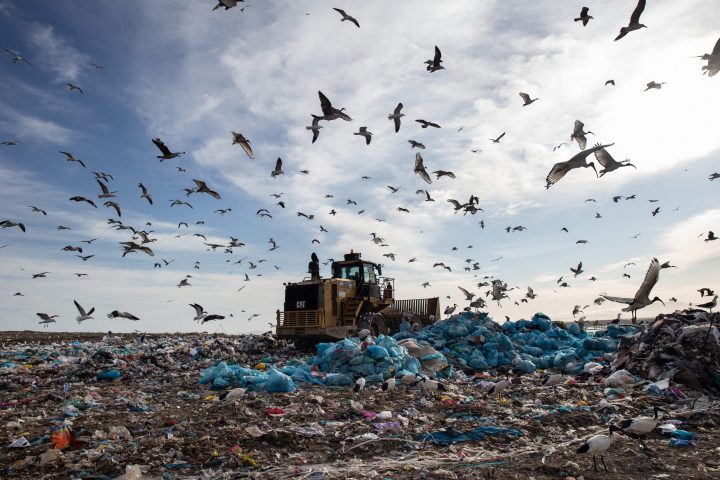
Landfills are seldom what comes to mind when we think of public space, but they are one of the best mirrors of how we relate to the public realm. It is time to rethink how we manage the huge amount of rubbish we send to the dump.
First published in the Daily Maverick 168 weekly newspaper.
Marcela Guerrero Casas is a programme lead at the Western Cape Economic Development Partnership. This work was supported by the Heinrich Böll Stiftung Southern Africa.
Recently, I visited a landfill for the first time in my life; it was a revealing experience. As one of my colleagues commented, the sight of Cape Town’s Coastal Park landfill in Muizenberg was both amazing and sad. On the one hand, the scale of the operation in terms of space and materials, as well as the system in which trucks, reclaimers and formal employees of the site work, was nothing short of impressive; on the other, it was a poignant reminder of the stark social inequity that enables some to over-consume while others’ livelihoods depend solely on what is disposed of as a result of that over-consumption. Every single one of us plays a role in that cycle.
Other terms for landfill include rubbish dump, refuse heap, junkyard, disposal area, dumping ground, et cetera, and the language we use is a strong indicator of the deep perceptions we hold. Making a connection between landfills and our daily public space seems far-fetched as their impact is often invisible (although not harmless if we consider the contamination of our rivers and oceans). Once in a while, however, their impact becomes very visible: only last week, for example, heavy rains at Witsand affected the sand dunes covering an old landfill and exposed old rubbish, thus reminding us that waste is a matter of public concern.
Indeed, we may bury it, but that doesn’t mean the story of waste ends there. Our landfills produce methane, a greenhouse gas linked to climate change, as well as other chemicals that contribute to soil and air pollution. In addition, most landfills are already nearly full.
The question is therefore: How should we think about our shared spaces to accommodate for, and ideally better manage, the waste we produce but which we all so desperately try to hide from public view?
Traditional service provision, the activation of public spaces to exhibit art made up of “rubbish”, academics doing innovative research in this space, and the activities of waste actors in the private sector all indicate that waste really can form a virtuous cycle –despite the perception most of us hold.

Reclaimers play a crucial role in diverting waste from landill and from recovering useful material once it reaches the landfill. (Photo: Ashraf Hendricks)
A personal relationship
The waste we produce starts to accumulate in our private space, but it soon enters the public realm. Residents in formal parts of our cities normally do not have to think much about where waste goes after it gets placed on the pavement. In some cases, recycling happens, either by design or with the help of waste reclaimers; either way, waste does not often feature as a problem with which one must contend individually in these areas.
Yet we have a very personal relationship with waste; and no matter how much we might know about it, a negative perception is deeply embedded in our thinking. When I spoke with Taahirah Ghoor from GreenCape, she said that despite her intimate knowledge of this sector – she thinks about the circular economy daily – she finds herself at times defaulting to the idea that waste “is something you have to get rid of and hide – something can be perfectly clean in your hand, but as soon as it goes into the bin, it becomes dirty and untouchable”. Waste is clearly a resource in the wrong place.
Similarly, we are taught that a place without litter is one of value, and cleansing becomes an indicator for things such as safety and ambience. Conversely, we easily judge areas that have litter in public spaces as “unkept” while failing to see that, in poor neighbourhoods, service delivery can be insufficient at best. This is undeniably yet another mirror of the inequity that plagues our city.
Ghoor notes that, unlike energy and water, which are considered a basic right, not having waste in your environment is seen as more of a privilege, reserved for those who are able to pay for the extra service. She also acknowledges that maintaining clean public spaces has an additional level of complexity compared to other services because of the multiple inputs it requires in terms of collection, maintenance and safety, and because of how it ultimately relies on human behaviour. As she calls it, it is a “moving model”.
It truly is a moving model, and even though there is agreement that a clean place shows a level of appreciation by its users and/or authorities, it is also true that this might only be part of the story. Professor Bradley Rink from the University of the Western Cape (UWC) says “people like to hide waste” but fail to think about the steps that created it in the first place, or to imagine that when a piece of plastic is thrown away, that is not the end of waste. It is crucial to recognise the large set of actors that play a role in this “constellation of waste”, as Rink calls it. From the producers of waste, i.e., each one of us, to the “consumers” of waste who are often individual reclaimers or private companies who see the value of waste, to those managing the process, namely government, there is a multi-actor operation in place.
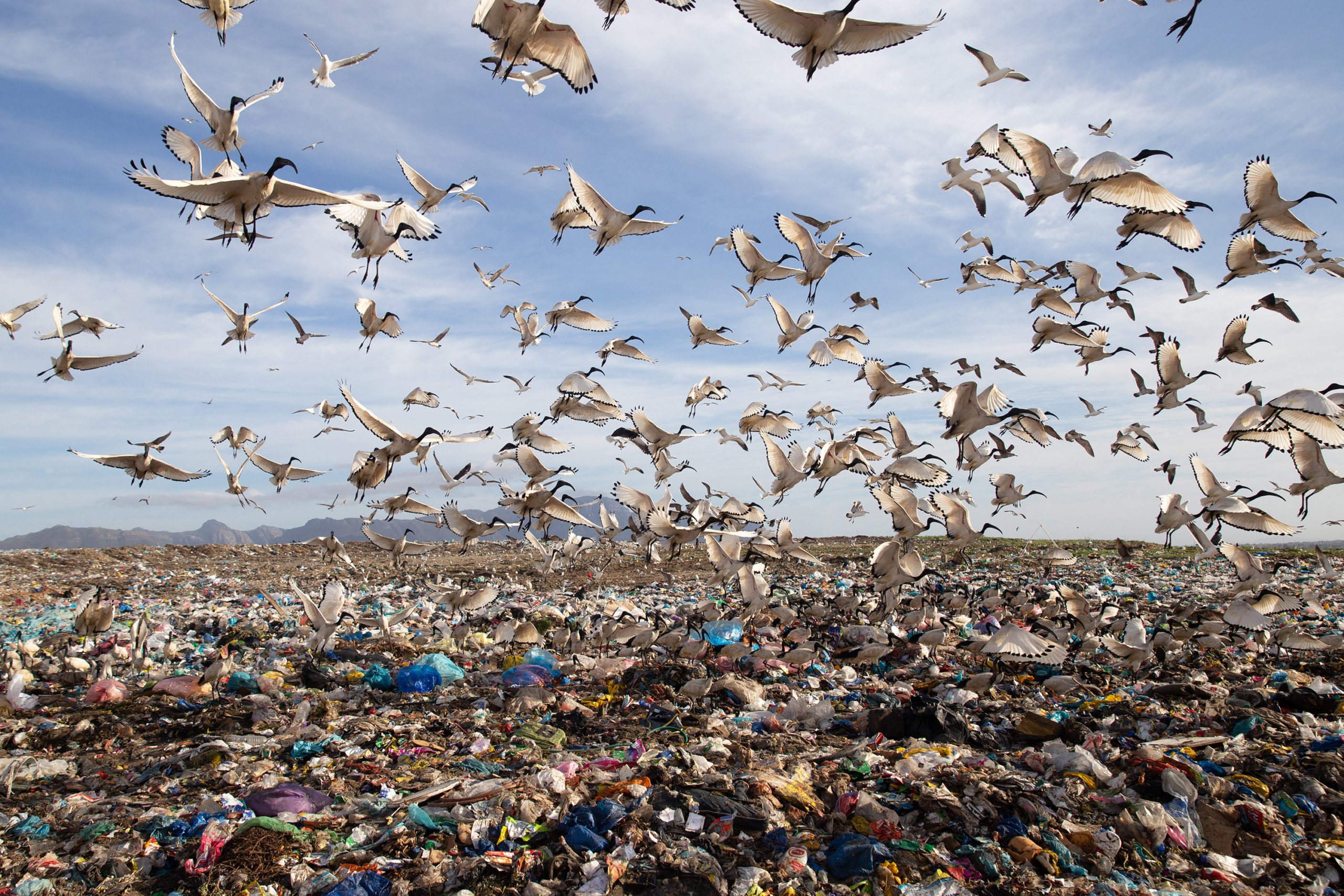
The Coastal Park landfill in Muizenberg is one of the last two operational landfills in Cape Town. (Photo: Ashraf Hendricks)
Whose job is it anyway?
Municipalities are responsible for many activities when it comes to waste management: cleansing, collection and transportation, storage, sorting and recycling, reprocessing, treatment, and disposal or burial. Various actors from the private sector play critical roles, ranging from formal businesses in the private sector to the thousands of informal reclaimers across our city who play a pivotal role (often unacknowledged and uncompensated) in diverting waste from landfill.
The job also falls on communities and civil society, particularly in informal settlements, where services are profoundly inadequate and refuse collection is often outsourced to private companies. Alliances that seek to improve waste management are key. A local campaign called Asivikelane, for instance, provides a channel for residents to report failures in waste removal and other basic services, to ensure an evidence-based response from government departments.
Analysing the waste system is also crucial work. There is great value in the facilitation and research provided by other non-governmental entities such as GreenCape, the Western Cape Economic Development Partnership (EDP), and academic groups like UWC’s Chair in Waste and Society. Practical solutions are sought by these institutions.
At a policy level, the city of Cape Town and the Western Cape provincial government have taken steps to proactively address waste management. In addition to the ban on organic waste from landfill across the province by 2027 (50% reduction by 2022), the City’s Climate Change Action Plan also incorporates actions to tackle waste.
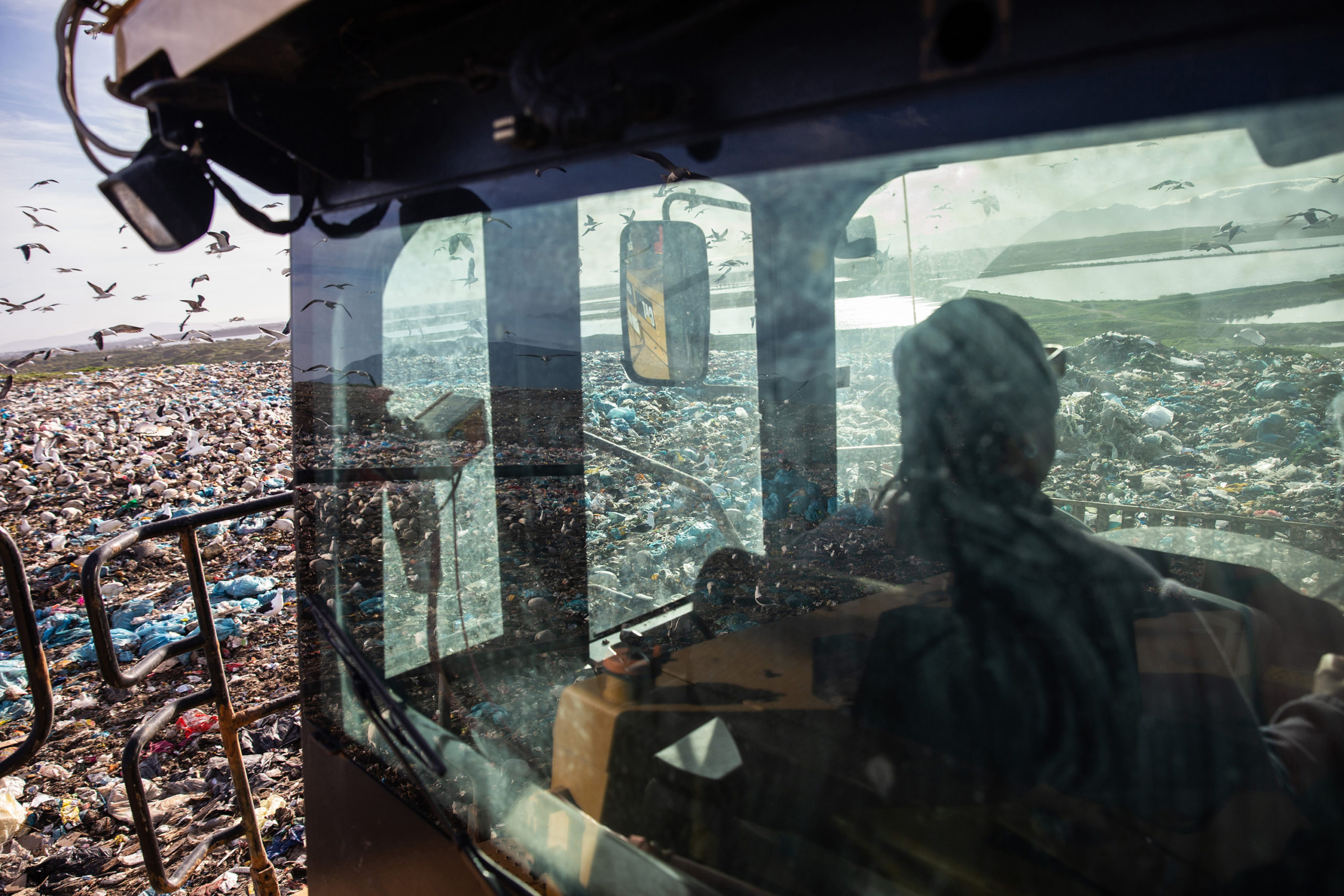
The coastal park landfill operates seven days a week and on any given morning, loads of waste are transported in from all parts of Cape Town. (Photo: Ashraf Hendricks)
Starting at home
We have a long way to go in Cape Town when it comes to waste management.
There are some efforts in place: the municipality offers recycling to some areas, other areas have hired private service providers to remove their recycling, and in most places across the city informal reclaimers also provide this service. When it comes to organic waste, there are community-based initiatives across Cape Town, which collect organic waste and turn it into compost.
The role of the private sector
Melanie Ludwig from the Organics Recycling Association of South Africa maintains that community-led initiatives are very valuable and – if done carefully – can certainly be part of the solution. They cannot, however, solve the problem as a whole.
Ludwig says it is crucial that people understand there is a cost to processing waste. While city residents are, in fact, already paying partly for that service in their rates, there is no consistent municipal system to separate either organic or inorganic waste; the private sector fulfils that role.
“The private sector can complement public efforts, but it is crucial that our value isn’t eroded by well-meaning ‘free’ services. These often end up damaging sustainability, because over time they can’t continue to operate, and their waste ends up reverting to landfill. If supported, the industry can help in the creation of jobs and the transformation of how we, as a society, see and understand the role of waste in our cities,” she says.
Reimagining landfills
Landfills are deliberately built far away. Transporting waste long distances is not only economically disadvantageous, but it also runs counter to the need to reduce carbon emissions. Locating landfills far away, moreover, allows them to continue to be out of our imaginings for better “public spaces”.
What if, instead, we thought of them as the repository of our daily stories and our daily experiences? What if we imagined them as a museum because they reflect how we behave and interact with our environment? Could they become places that are more respected and valued? What if waste removal and management were decentralised to become more present in our day to day, so that we would have to be far more thoughtful and conscious of these activities?
Those might be dreams for the future; in the meantime, we could start by making waste more visible, both in terms of the role it plays in our daily lives, as well as in concrete ways through financial incentives and penalties. Perhaps we need more art installations to remind us of the quantity of waste we produce, but also to allow us to see some beauty in waste.
And once the landfill is covered in green or turned into a park or trails, perhaps there is a way of documenting what sits buried underneath our feet. Waste may be out of sight, but it should never be out of mind. DM168
This story first appeared in our weekly Daily Maverick 168 newspaper which is available for R25 at Pick n Pay, Exclusive Books and airport bookstores. For your nearest stockist, please click here.

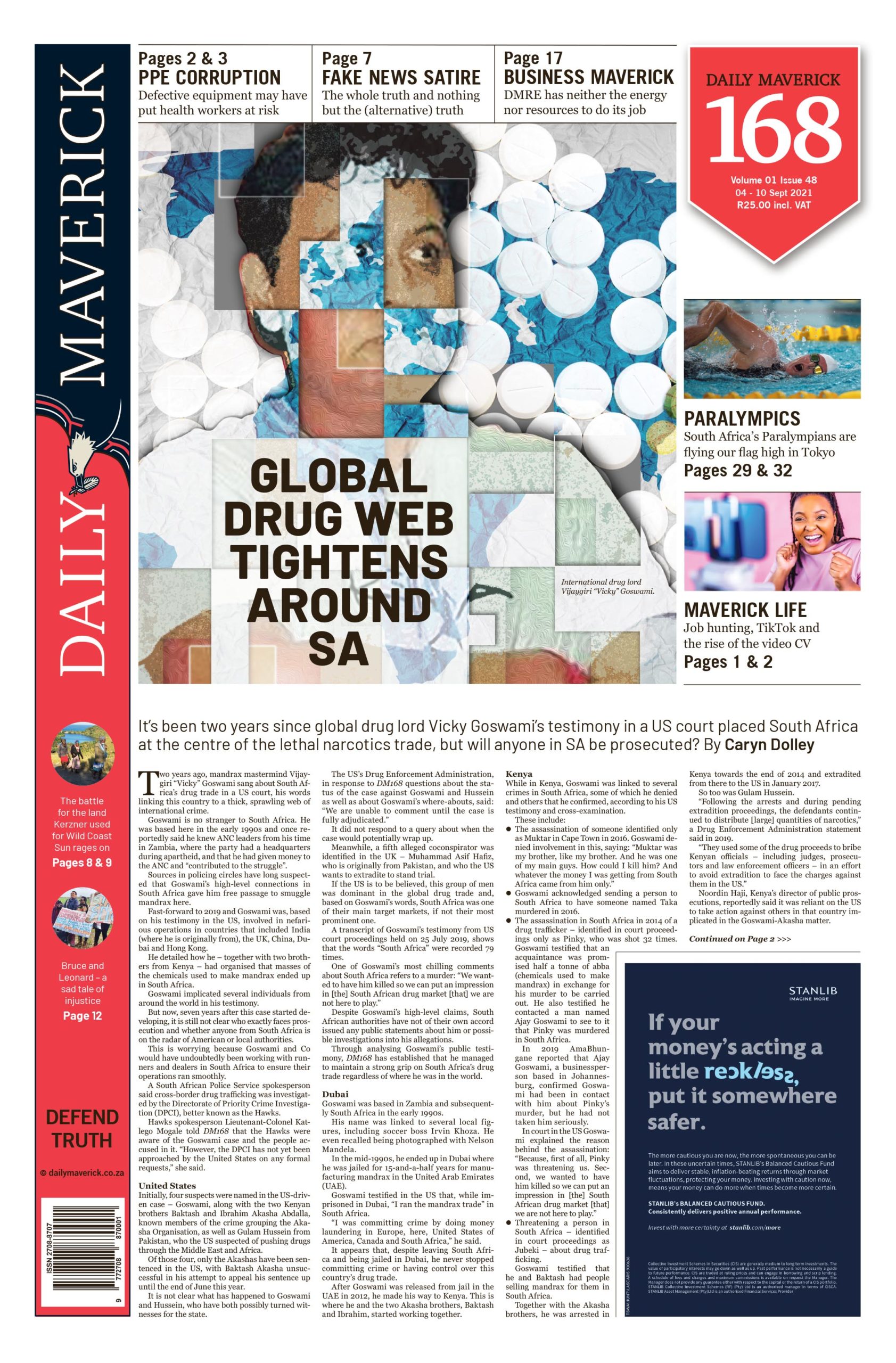


















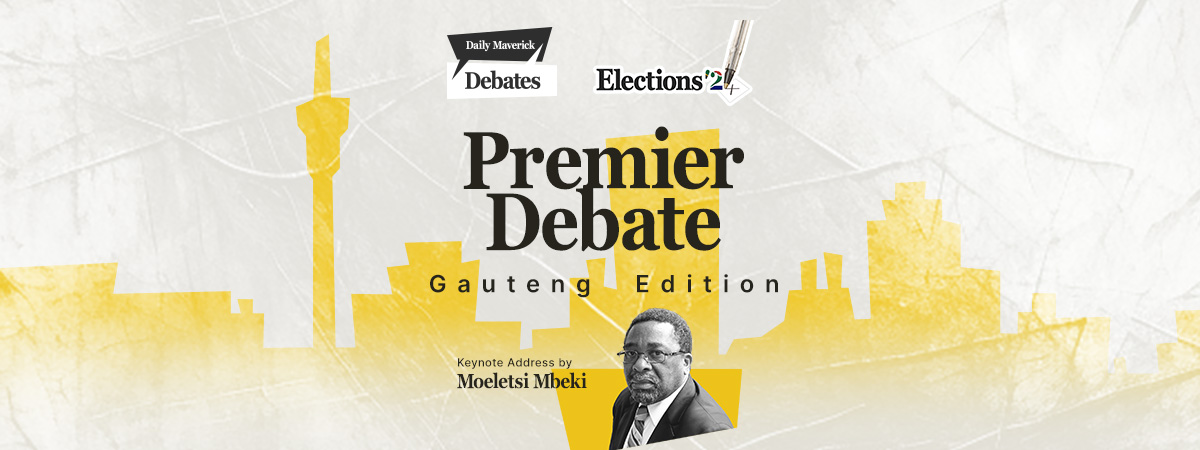
Comments - Please login in order to comment.